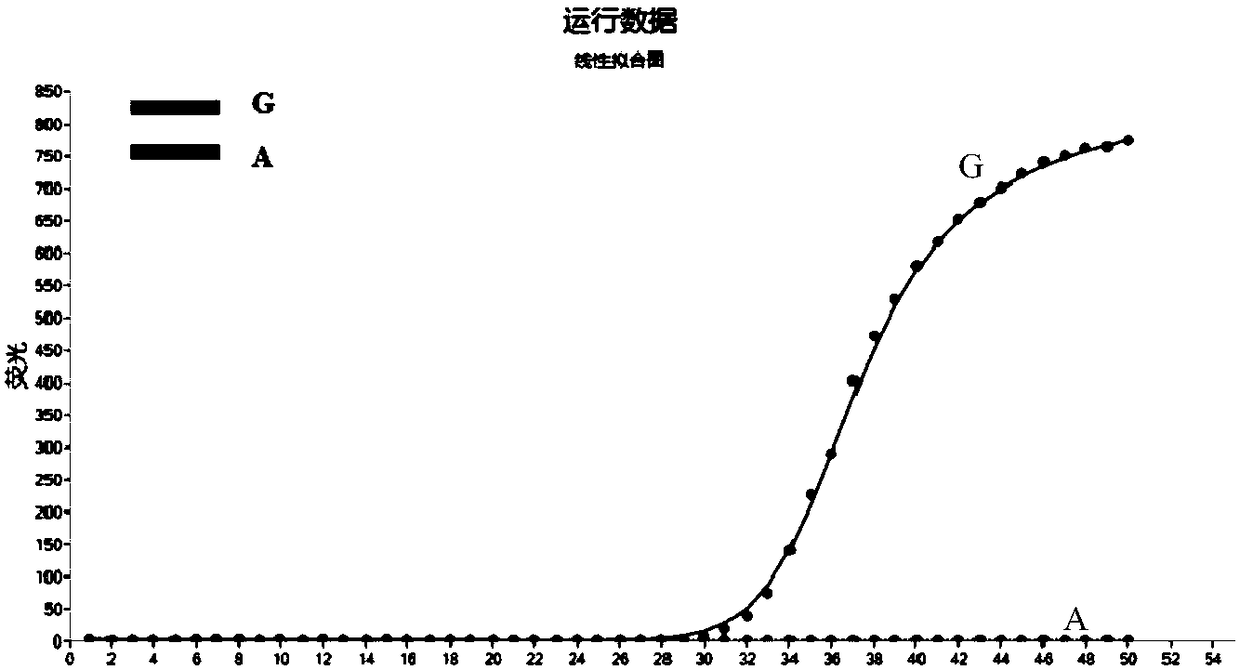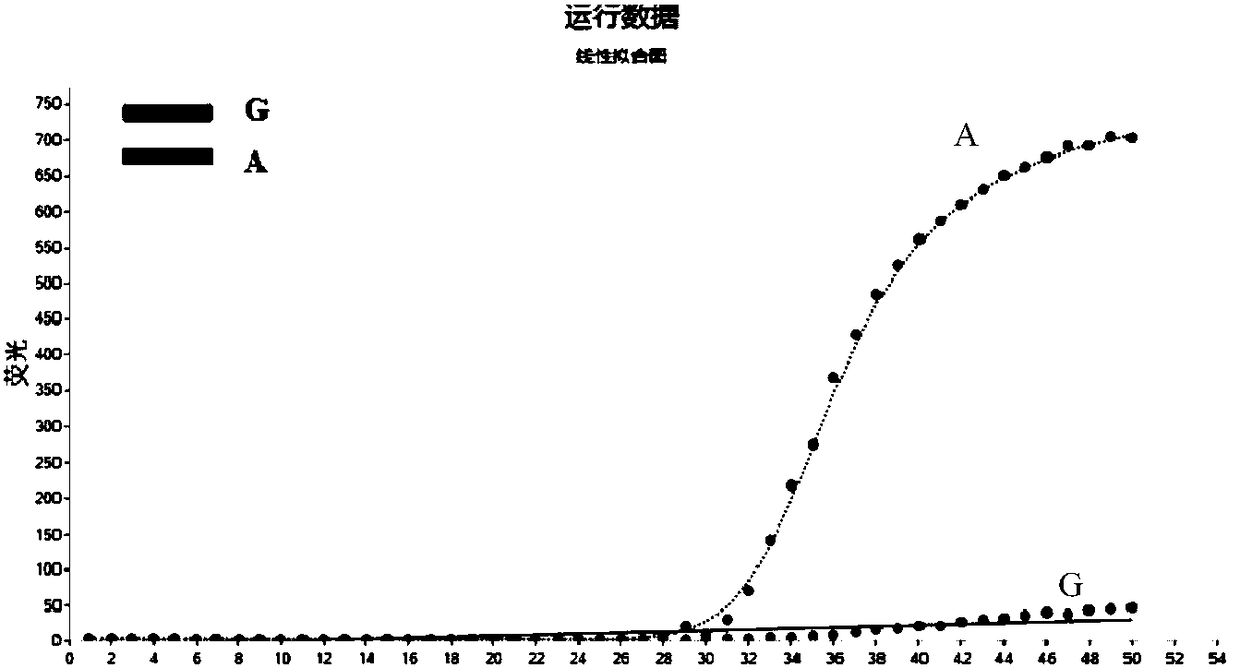Rapid detection kit for CYP2C19*2 or *3 genotype based on POCT mode
A CYP2C19 and genotyping technology, applied in the field of molecular biology, can solve problems such as environmental pollution, difficulty in meeting the requirements of rapid and accurate CYP2C19 gene detection, and unsuitability for clinical promotion.
- Summary
- Abstract
- Description
- Claims
- Application Information
AI Technical Summary
Problems solved by technology
Method used
Image
Examples
Embodiment 1
[0110] Example 1 Cell lysate performance test
[0111] PCR is an extremely sensitive technique for the detection of trace amounts of DNA. At present, the main samples of painless and non-invasive detection methods in clinical practice include oral swabs, hair, nails, oral saliva and body cavity fluid, etc. After the contained DNA is extracted and purified, it can be added to the PCR reaction system for reaction, which requires a lot of manpower, material resources, and financial resources. In order to solve this problem, and considering that the amplification effect after directly adding cells is not ideal, and it is not suitable for clinical testing, the inventors tried to add a certain concentration of cell lysate. And the comparative experiment of adding cell lysate and not adding cell lysate was carried out. (Note: Exfoliated cells are used as templates)
[0112] The reagent formula is shown in Table 1-1 and Table 1-2. 100 replicates were prepared for each of the three ...
Embodiment 2
[0146] Example 2 LNA modified probe improves typing accuracy
[0147] LNA is an oligonucleotide derivative that has a similar structure to DNA / RNA, so it can effectively recognize and bind DNA and RNA. After LNA is used to modify oligonucleotides, it can increase the thermal stability of primers or probes and increase their annealing temperature by 3-8°C. The probes developed in this kit are modified with LNA. According to the software prediction, the Tm values of the modified wild-type probes and mutant probes combined with the template are all increased by about 4°C. In order to fully demonstrate the difference between LNA-modified probes and non-LNA-modified probes, the following comparative experiments were carried out. The PCR systems are shown in Table 2-1 and Table 2-2, respectively, to detect wild homozygotes, heterozygotes and mutant homozygotes, each Three replicates were performed for each genotype, and the reaction procedures are shown in Table 1.
[0148] The ...
Embodiment 3
[0188] Example 3 Primer Probe Optimum Ratio Optimization Experiment
[0189] After the specific primers and probes are screened and confirmed, the concentration of primers and probes in the PCR reaction system needs to be optimized (using oral cells as templates). The PCR reaction system corresponding to the primer and probe concentration is shown in Table 3-1.
[0190] Table 3-1 CYP2C19*2 Site Primer Probe Concentration Experiment PCR Reaction Overall System Formula Table
[0191]
[0192]
[0193] Table 3-2 CYP2C19*3 Site Primer Probe Concentration Experiment PCR Reaction Overall System Formula Table
[0194]
[0195] The final concentrations of sodium lauryl sulfate and polyethylene glycol octylphenyl ether in the above PCR reaction system are 0.005% w / v and 0.01% w / v.
[0196] Experimental results:
[0197] 1. CYP2C19*2
[0198] (1) Primer concentration gradient experiment (concentration one, concentration two, concentration three)
[0199] a. The statistical...
PUM
 Login to View More
Login to View More Abstract
Description
Claims
Application Information
 Login to View More
Login to View More - R&D
- Intellectual Property
- Life Sciences
- Materials
- Tech Scout
- Unparalleled Data Quality
- Higher Quality Content
- 60% Fewer Hallucinations
Browse by: Latest US Patents, China's latest patents, Technical Efficacy Thesaurus, Application Domain, Technology Topic, Popular Technical Reports.
© 2025 PatSnap. All rights reserved.Legal|Privacy policy|Modern Slavery Act Transparency Statement|Sitemap|About US| Contact US: help@patsnap.com



